An Homage to Tadeusz Rolke in 10 Photographs
Tadeusz Rolke, hailed as an icon and legend of Polish photojournalism, died in his native Warsaw in July 2025, at the age of 96. He dedicated his...
Guest Author 6 October 2025
Journey around the entire world through an array of vividly colourful photographical lenses at the Accidentally Wes Anderson exhibition in the heart of London’s South Kensington. From British Oyster Bars to the wild depths of Iceland, this wildly wondrous exhibition pulls us into a world where colour and culture unite in spectacular harmony.
The American filmmaker Wes Anderson is known for his eccentric films, which see uniquely visual and narrative styles, and frequent use of ensemble casts. His films are instantly recognizable for their aesthetics, which is how the Accidentally Wes Anderson concept was born.
Founded in the Summer of 2017 from a small apartment in Brooklyn, New York, Accidentally Wes Anderson has formed a global community inspired by the aesthetic styles and details of Wes Anderson, whose members seek and share the most beautiful, idiosyncratic, and interesting places on earth, uncovering unique and unexpected stories behind the façades.
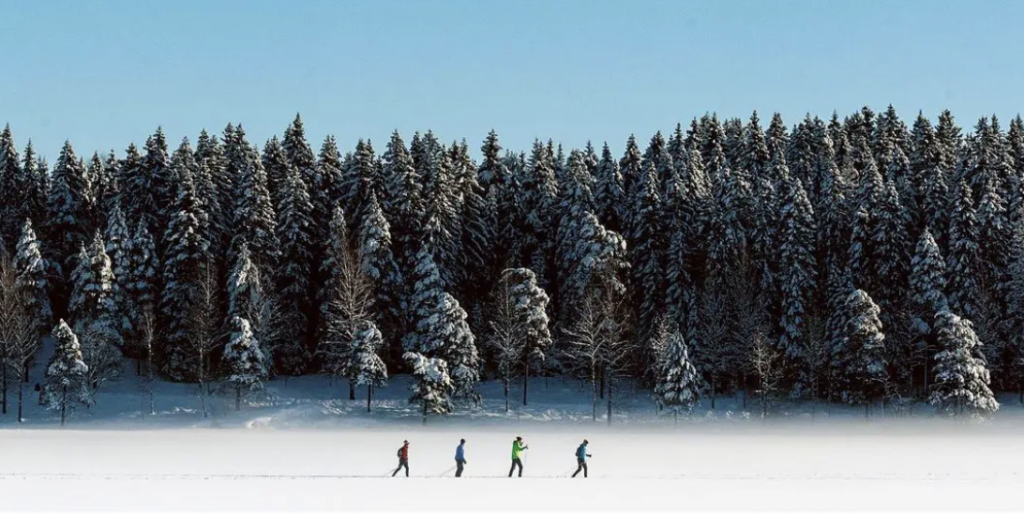
Cross-Country Skiers. Sognsvann Lake, Norway. C.1700. Photo by Chris Dovletoglou. Accidentally Wes Anderson.
The first room we walk into in this London exhibition has light pink walls, upon which there is a detailed historical timeline of the progression of Accidentally Wes Anderson over the last few years. A large world map is spread across the wall, pinpointing all the different locations of the Accidentally Wes Anderson community. This room serves as a lovely start to the exhibition, introducing us to the concept with some light-hearted photographs before entering the next room.
Walking into a bright yellow room, we are welcomed into a world inspired by Wes Anderson through an impressive collection of photographs, picturing brightly coloured and decorated doors from all over the world.
One of our standout photographs is the Henne Kirkby Kro of Henne, Denmark, captured by Valdemar Cunningham. Particularly complementary of the yellow walls, this photograph of a single yellow door, at the centre point of the photograph, surrounded by nothing but blue skies and green fields, feels like a step into the outside.
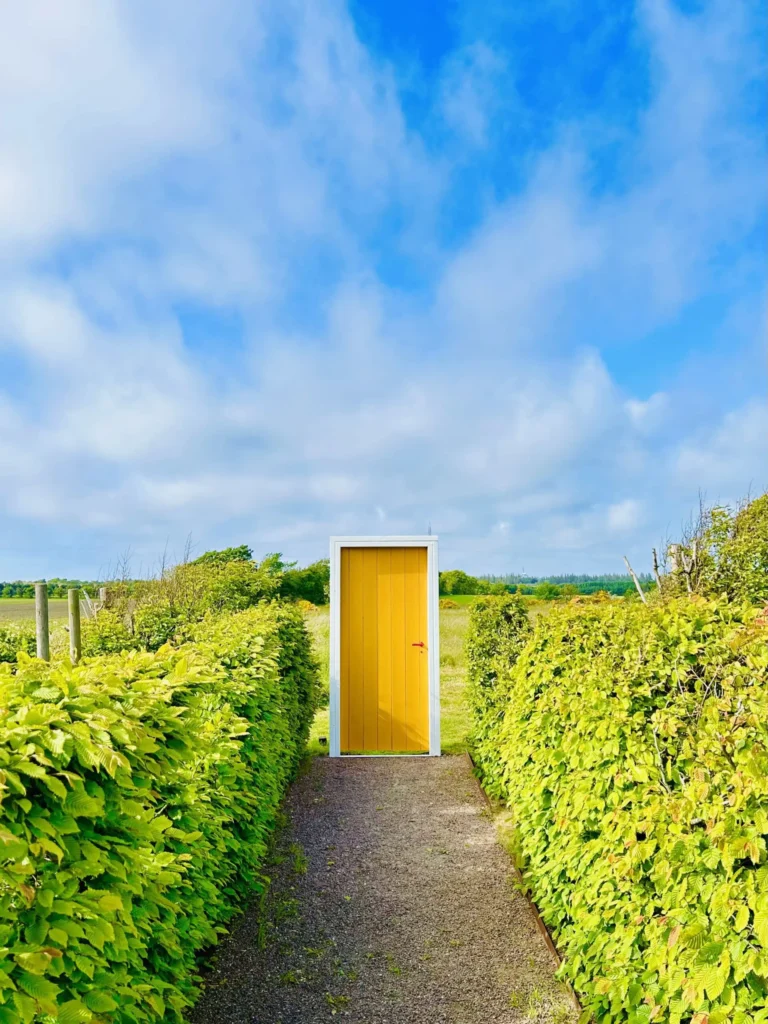
Henne Kirkeby Kro. Henne, Denmark. C.1790. Photo by Valdemar Cunningham. Accidentally Wes Anderson.
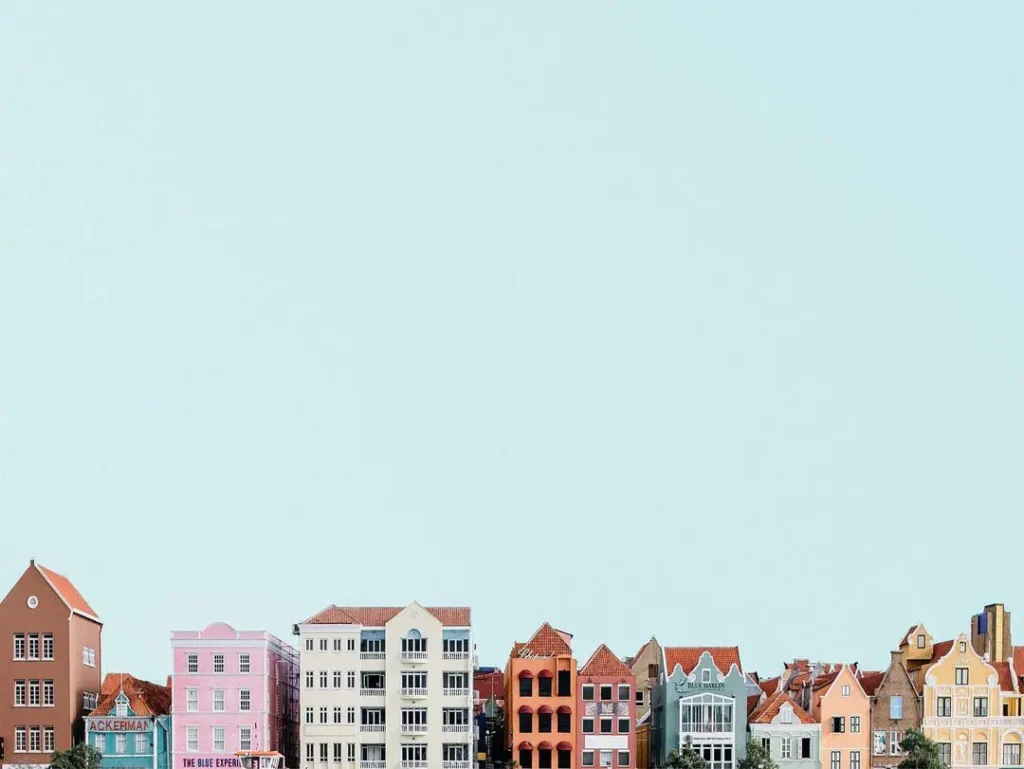
Willemstad Skyline. Willemstad, Curaçao. C. 1634. Photo Credit: Jeffrey Czum. Accidentally Wes Anderson.
Moving into the next room, the walls change from yellow to orange and are covered with multiple photographs of the façades of spectacular building fronts and pastel-colored patterns. What we like most about this room is that not every photograph captures a grand building, but rather, much smaller store and restaurant fronts seem to take to the main stage.
From Portuguese palaces to Whitstable’s tiniest oyster bar, it is not the size of the buildings that impress, but rather the incredible detail and care that goes into the making of each and every exterior.
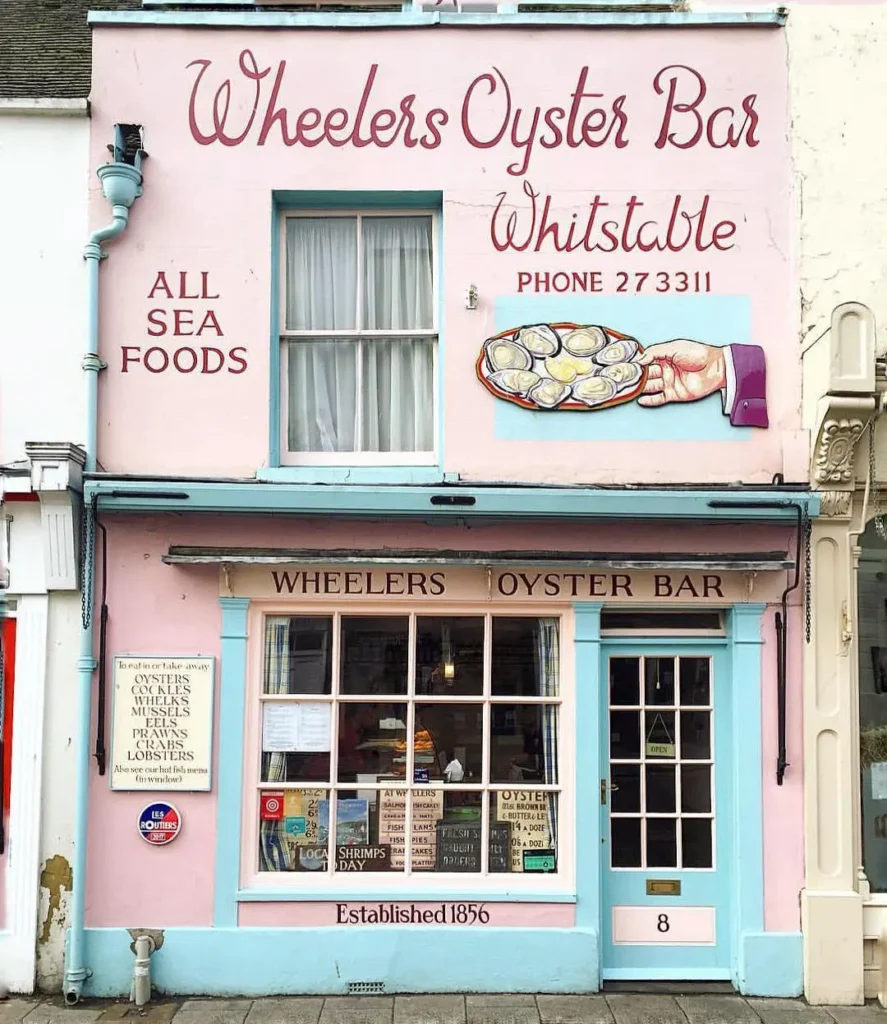
Wheeler’s Oyster Bar. Whitstable, United Kingdom. C.1856. Photo by Bella Foxwell. Accidentally Wes Anderson.
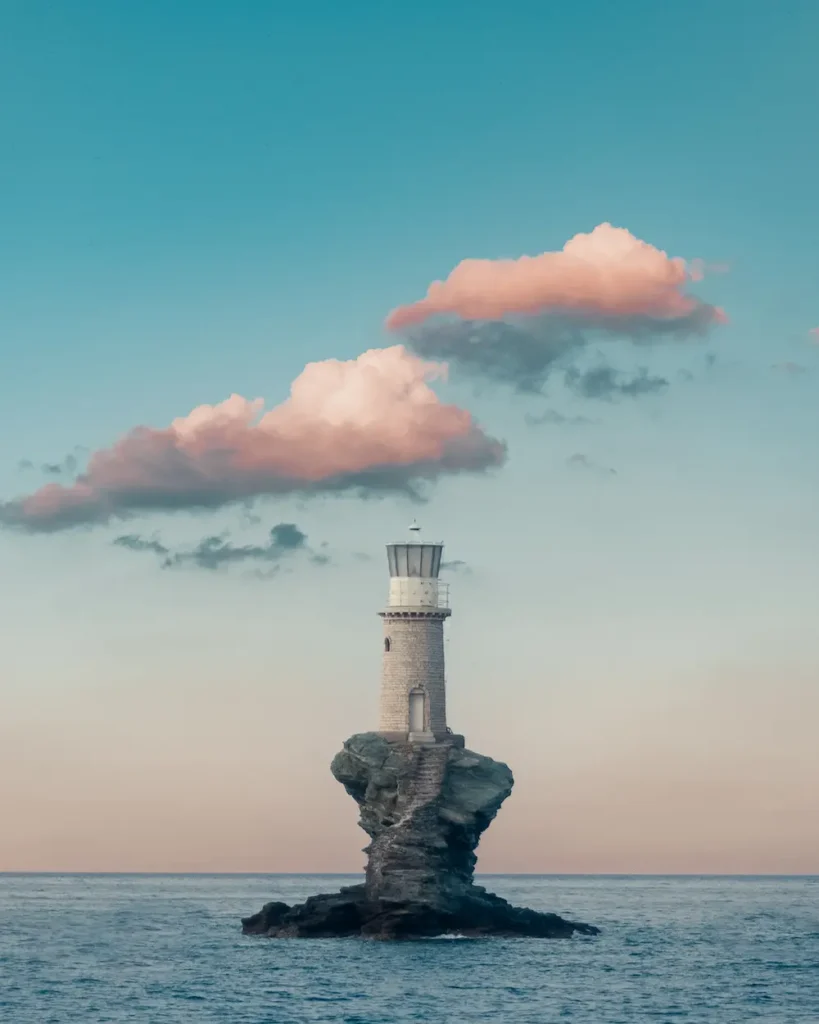
Tourlitis Lighthouse. Andros, Greece. C.1897. Photo by George Bogdanis. Accidentally Wes Anderson.
The royal blue colour of the next room fittingly invites us out to sea, with a maritime theme running across all four walls. Through the waves of nautical nostalgia, from lifeguards in Chile to lighthouses in Greece, stepping into the blue doesn’t get much brighter than this!
The Tourlitis Lighthouse is apparently still credited today for advancing maritime navigation for Greece’s port city of Andros. Situated 200 meters out to sea, the Lighthouse is the only structure of its kind in Europe to be built on such a rock formation.
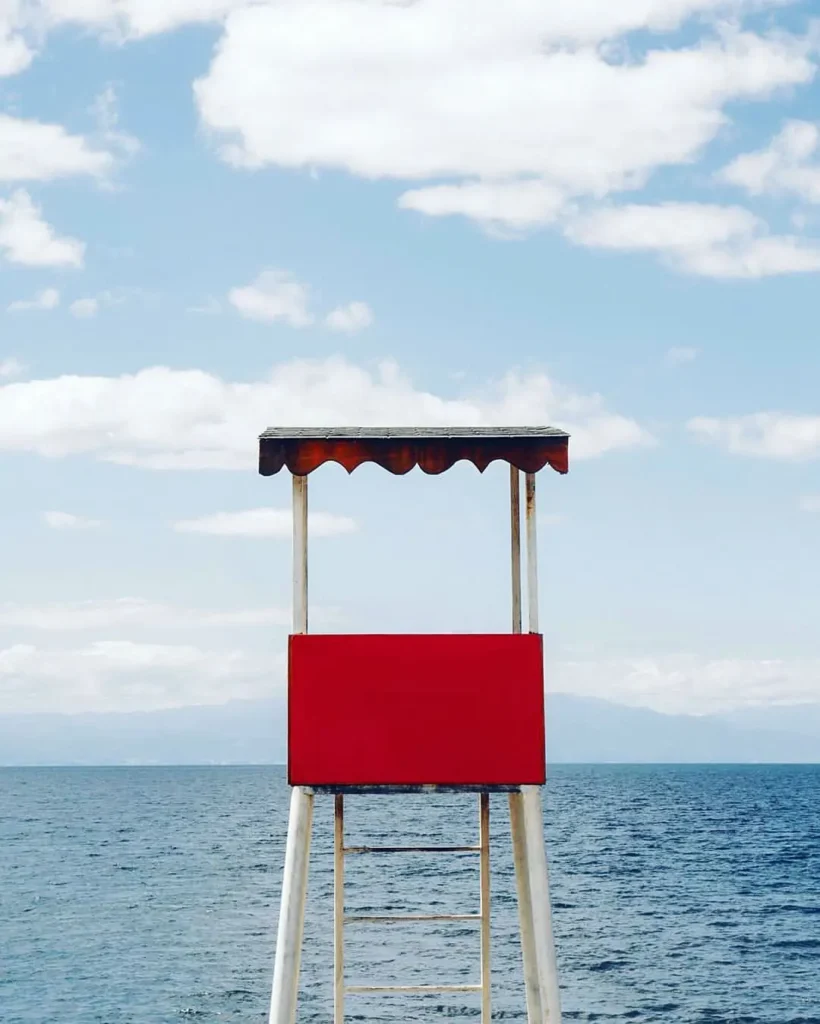
Lake Llanquihue. Frutillar, Chile. C.1856. Photo by Jaime Kunstmann. Accidentally Wes Anderson.
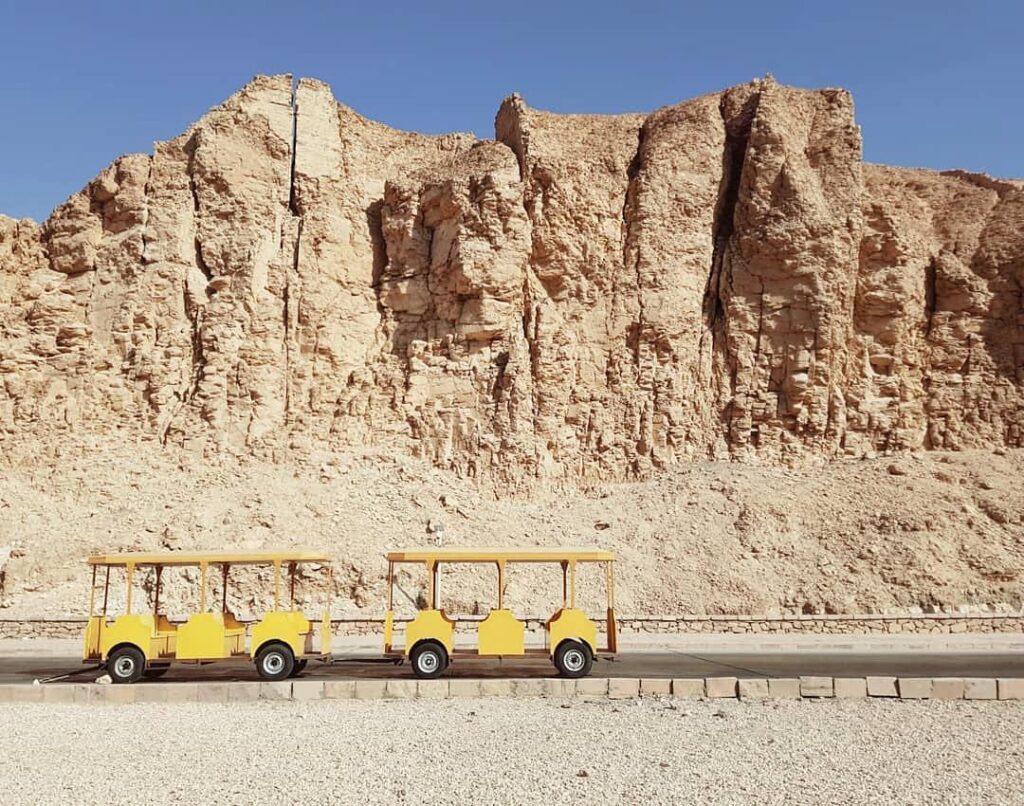
Valley of the Kings. Luxor Governorate, Egypt. Photo by Sofia Pomoni. Accidentally Wes Anderson.
The next room, this time moving into a lighter blue, sees a vast array of transport photographs, spanning from tube stations to airplanes and everything in between. The Egyptian valley captured above is among the most important archaeological sites in the world.
Below, perhaps the most exotic of transport methods, is a hot-air balloon over New Zealand’s Waikato. This photograph was taking during a festival held every year over the lakes of Hamilton, from sunrise until the ZURU Night Glow, when the balloons are illuminated as music is performed.
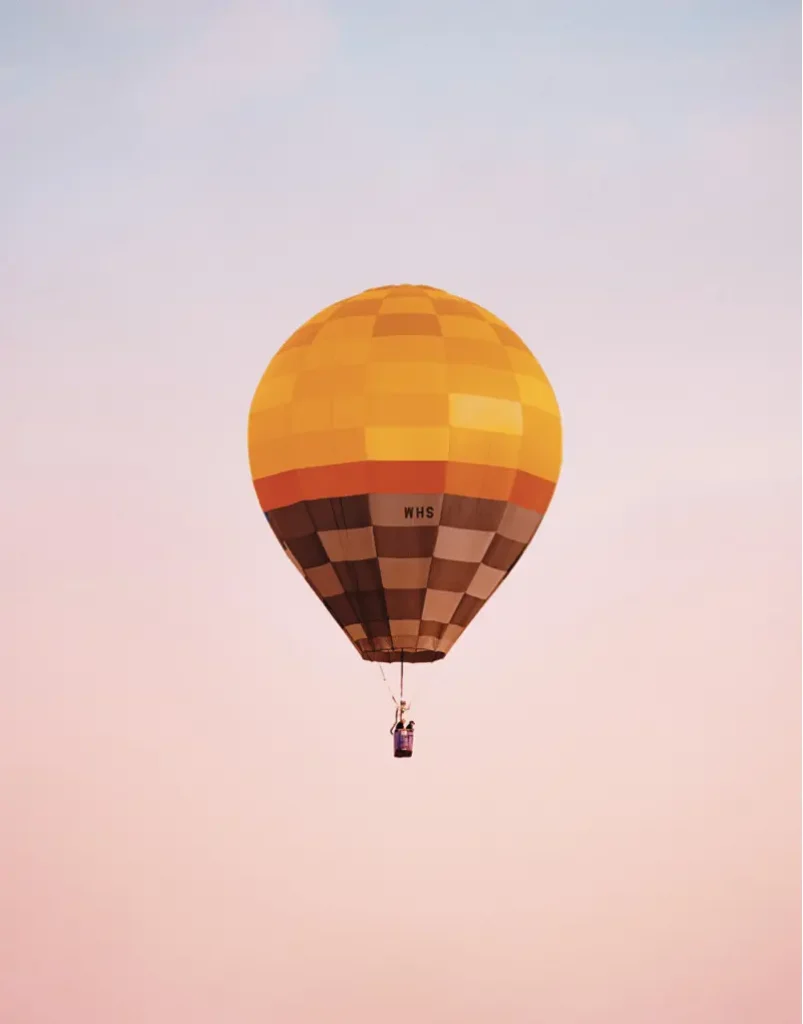
Hot Air Balloon. Hamilton, New Zealand. C.1783. Photo by Marie Valencia. Accidentally Wes Anderson.
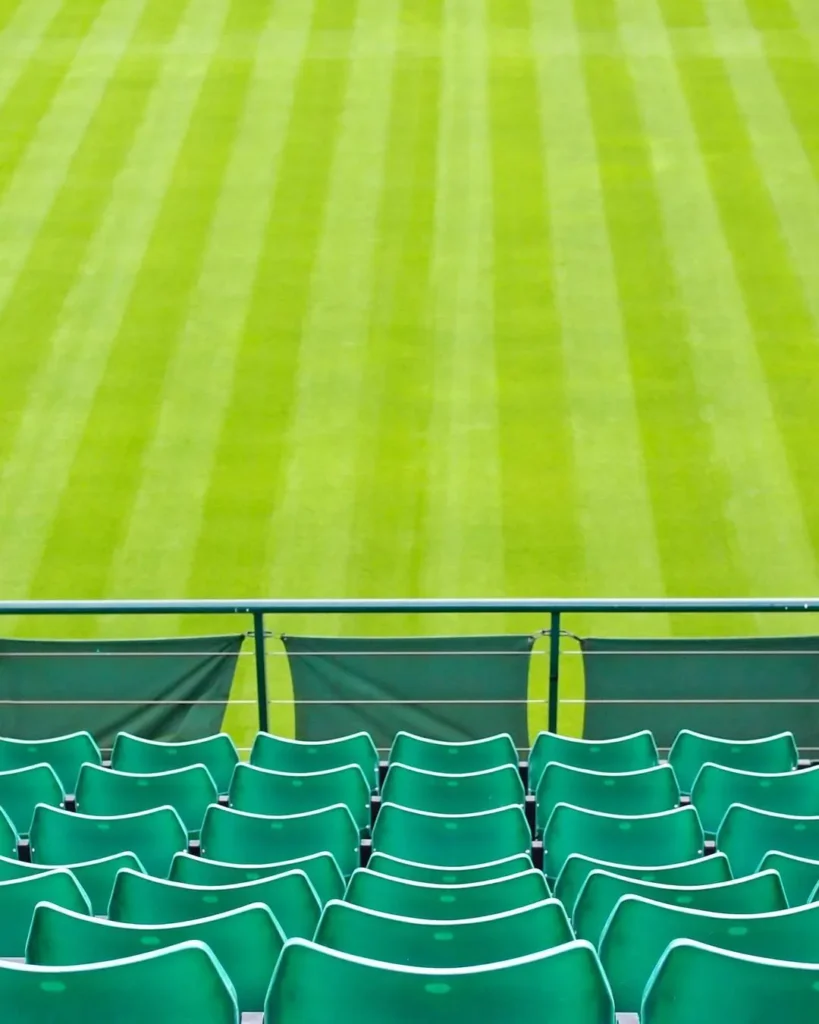
Wimbledon Court 18. London, UK. C.1877. Photo by Shannon Decock. Accidentally Wes Anderson.
From spectators to star athletes, the bright red and white colored walls in this room encompass different sports that are both watched and played around the world. From the tennis courts of London’s famous Wimbledon to the Grain Surfboards of York, Maine, the origins and stories behind different cultural sporting practices can be celebrated throughout the room.
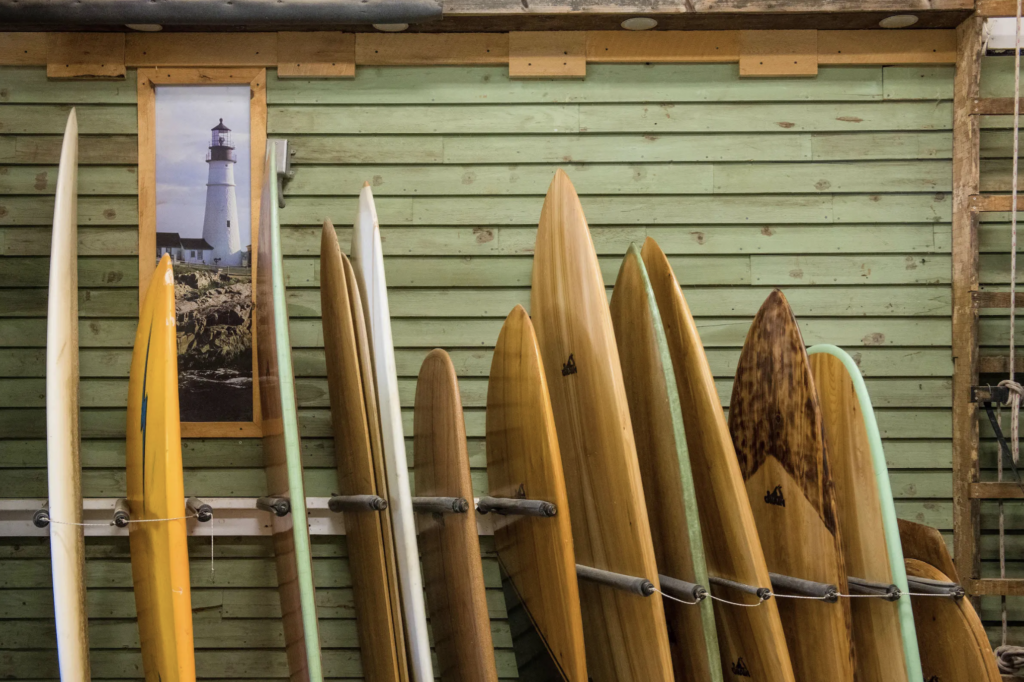
Grain Surfboards. York, Maine. C.2005. Photo Credit: Accidentally Wes Anderson.
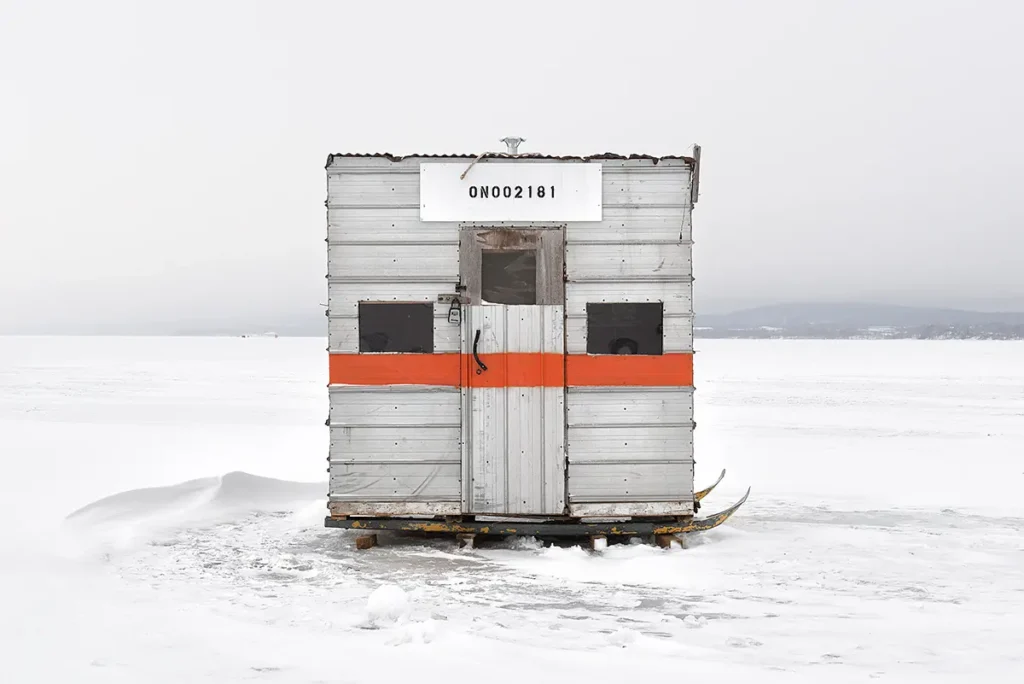
Ice-Fishing Shacks. Lake Nipissing, Canada. C.1600. Photo Credit by Stephan Graveline. Accidentally Wes Anderson.
The next coloured room, a dark green, encapsulates two themes: Nature and Hotels. The nature room is expansive, capturing everything from the ice-fishing shacks of Canada, to the resting camels of Cairo. Sandy Deserts to Snowy Mountains, the grandiosity of Mother Nature is expertly demonstrated as we move through this room.
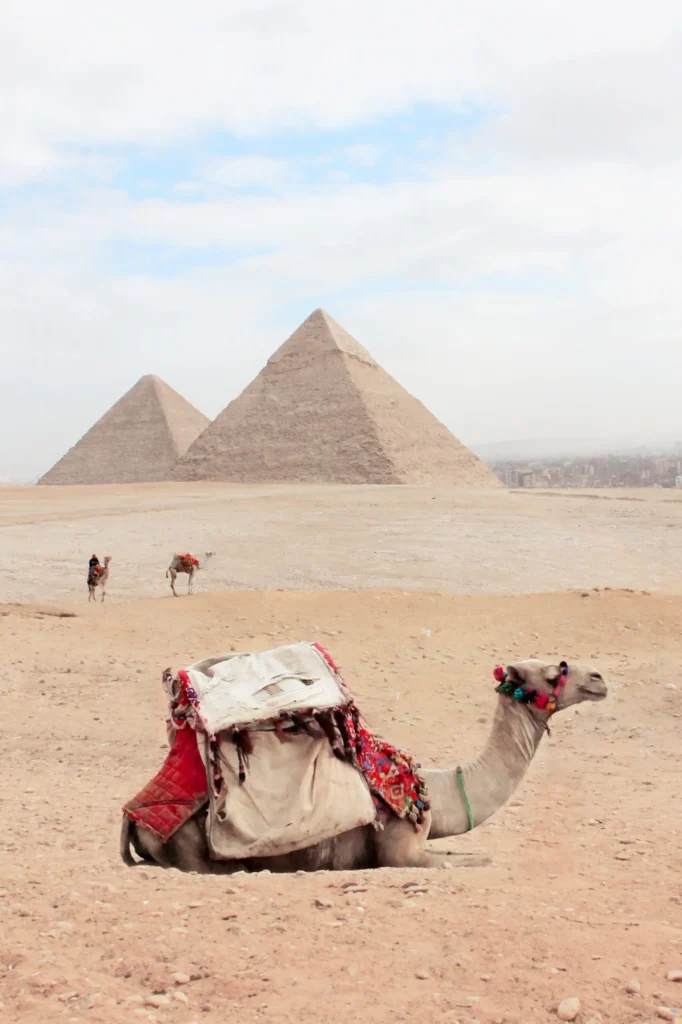
Western Desert. Cairo, Egypt. Photo Credit by Jessica Kantak Bailey. Accidentally Wes Anderson.
Moving onto a slightly more fabricated subject matter, we see a fantastic selection of hotel architecture from across the globe. The golden tones of the Grand Hotel Evropa of Prague contrast well with the light pastel blue and pink hues of Los Angeles’s Georgian Hotel.
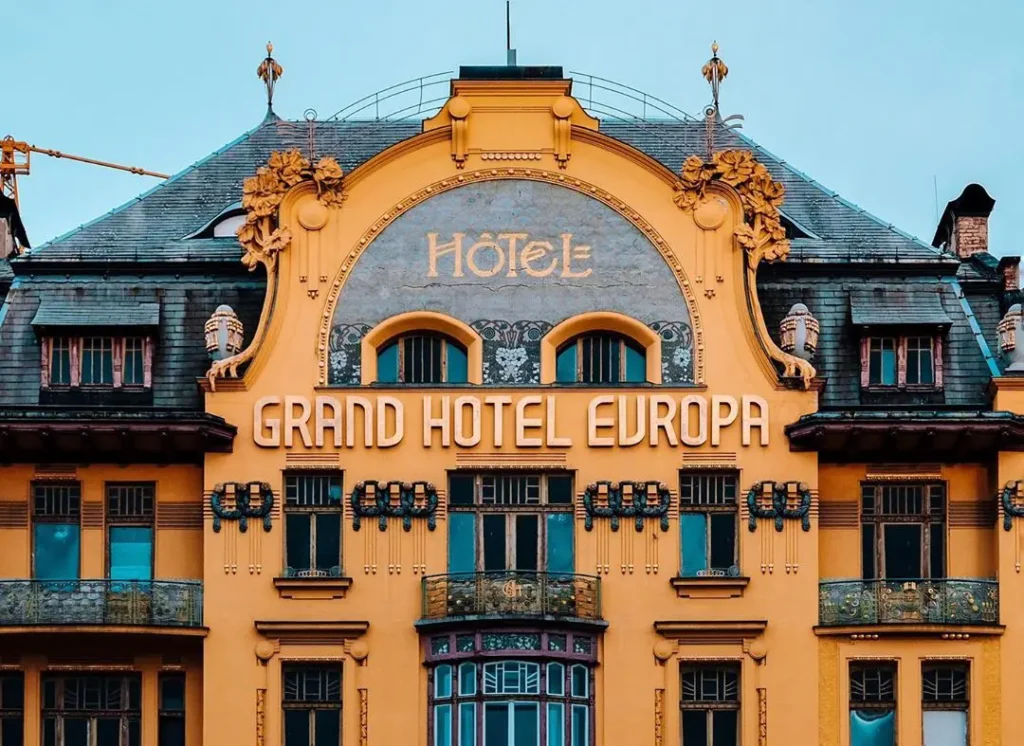
Grand Hotel Evropa. Prague, Czech Republic. C.1872. Photo Credit: Damian Chong. Accidentally Wes Anderson.
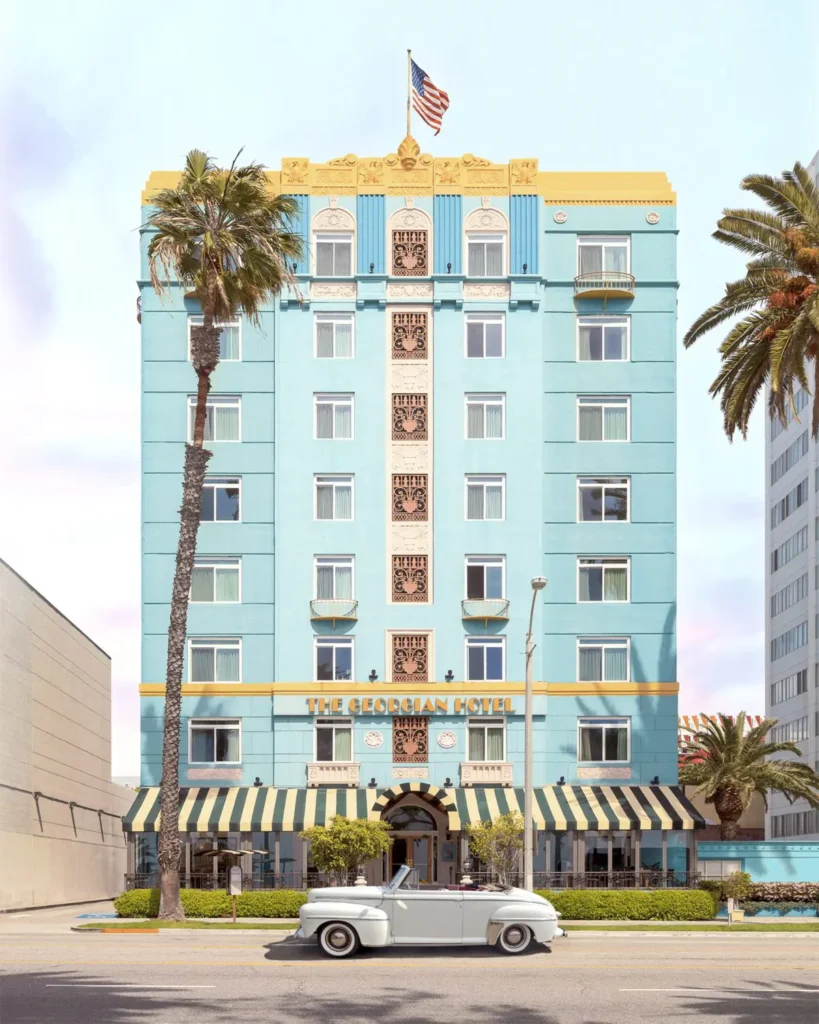
Georgian Hotel. Los Angeles, California. C.1933. Photo Credit: Paul Fuentes. Accidentally Wes Anderson.
Finally, the last room we move into sees photographs related to London. Of course, a Wes Anderson-inspired exhibition in South Kensington wouldn’t be complete without the inclusion of the renowned Bibendum Oyster Bar. If you are planning to visit the exhibition soon, then we suggest taking a visit here afterwards for some Champagne, to really soak in the surroundings of one of London’s most iconic destinations.
DailyArt Magazine needs your support. Every contribution, however big or small, is very valuable for our future. Thanks to it, we will be able to sustain and grow the Magazine. Thank you for your help!